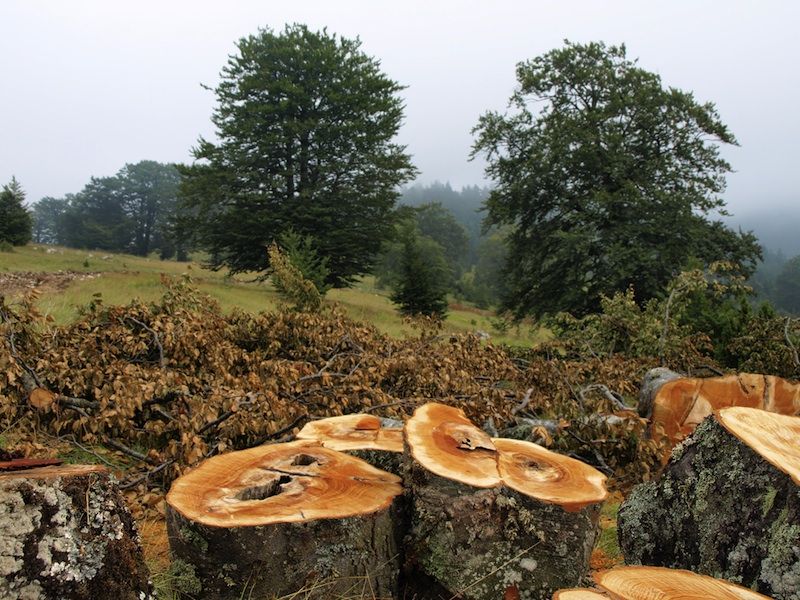9% of Today's Warming Caused By Preindustrial People

Humans started causing climate change long before the Industrial Revolution and the beginning of the fossil fuel era. A new study shows that the echoes of the earliest human-caused carbon emissions are still present in our atmosphere.
In fact, preindustrial carbon emissions, caused by deforestation as the world's population grew, were responsible for 9 percent of the total warming the globe has seen to date, the researchers say.
"The earlier the emissions occur, the less the influence on today's climate. But a part of the emissions stays in the atmosphere over a very long time scale of centuries to millennia," study researcher Julia Pongratz of the Max Planck Institute for Meteorology in Germany told LiveScience.
This rethinking about carbon emissions could alter the relative blame put on various nations by as much as 2 percent, the researchers said. The political ramifications are not yet clear, but most international negotiations on climate change have focused on a "Ppolluter pays" model in which the biggest emitters would take on the biggest role in mitigating global warming. Including developments as far back at the ninth century would place slightly more burden on China and South Asian nations, according to the researchers.
function reload_quiz_ads(){ reloadScripts(null, ['ad_imgBoard', 'ad_imgViewer']); }
Early emissions
Pongratz, who conducted the study with environmental scientist Ken Caldeira at the Carnegie Institution for Science in Stanford, Calif., noted that estimates of various nations' contributions to the atmosphere's carbon dioxide have all focused on emissions after 1840. [10 Climate Myths Busted]
Sign up for the Live Science daily newsletter now
Get the world’s most fascinating discoveries delivered straight to your inbox.
But between A.D. 800 and about 1850, the world population quintupled to more than a billion. With that population boom came an increasing need for agriculture, and thus deforestation.
Trees are what scientists call carbon sinks. They store carbon dioxide and keep it out of the atmosphere. Once they're cut down, not only do they stop taking in carbon dioxide during photosynthesis, they rot and release the stored greenhouse gas.
Using historical documentation, Pongratz and Caldeira created a virtual map of land use stretching back to 800. This reconstruction can be combined with climate computer models to determine just how much land-use changes influenced the climate.
Using these models, the researchers found that 5 percent of the total "extra" CO2 in the atmosphere — the emissions that wouldn't be there if humans weren't around to create them — date back to the preindustrial era before 1850. The percentage of preindustrial emissions for each region varies. For example, China and South Asia have only recently begun burning fossil fuels in earnest, Pongratz said, but historically these regions underwent massive amounts of deforestation. So those regions' preindustrial emissions make up between 10 percent and 40 percent of their total carbon output.
Today, the researchers found, most deforestation-related carbon emissions are occurring in tropical regions of the world.
Assigning blame
Since the late 1800s, the globe has warmed by about 1.33 degrees Fahrenheit (0.74 degrees Celsius). About 9 percent of that warming is because of preindustrial emissions, Pongratz and Caldeira report Wednesday (July 4) in the journal Environmental Research Letters.
"This is a pure scientific study, and many things go into 'Who is responsible for what' that go outside the scope of science," Pongratz said. "But when you attribute today's climate change to regions of the world, then the picture indeed changes when you account for these preindustrialized regions."
As Pongratz and her colleagues have previously reported, this historical look at carbon emissions reveals some of the major human events that shaped history. In particular, after the Mongols invaded Asia in 1200, the region's carbon emissions dropped as forests were allowed to regrow in a time of war and population disruption. The Black Plague in Europe during the 1300s also appears to have created a carbon emissions blip, albeit a less dramatic one than the Mongol invasion.
"Independent of political implications for today, our study is quite interesting to look at how this attribution evolves over time," Pongratz said.
Follow Stephanie Pappas on Twitter @sipappas or LiveScience @livescience. We're also on Facebook & Google+.

Stephanie Pappas is a contributing writer for Live Science, covering topics ranging from geoscience to archaeology to the human brain and behavior. She was previously a senior writer for Live Science but is now a freelancer based in Denver, Colorado, and regularly contributes to Scientific American and The Monitor, the monthly magazine of the American Psychological Association. Stephanie received a bachelor's degree in psychology from the University of South Carolina and a graduate certificate in science communication from the University of California, Santa Cruz.











